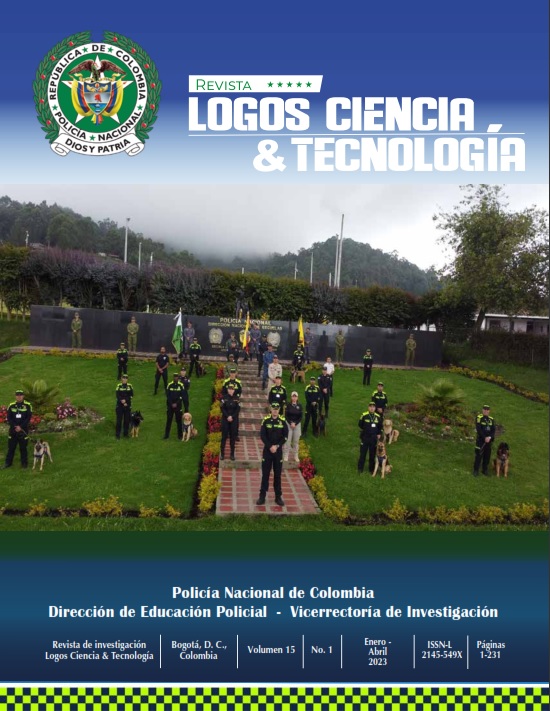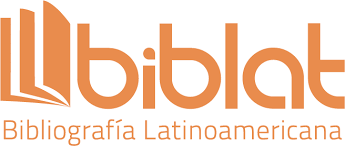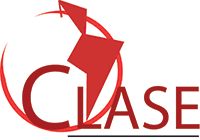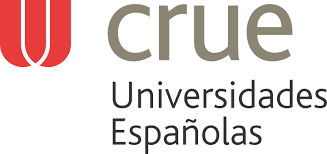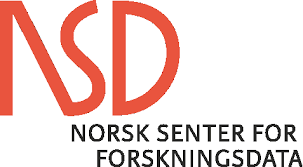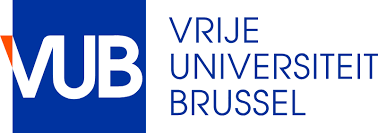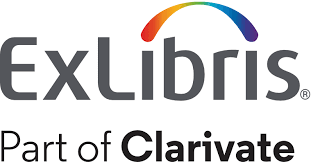Metodologia de computação forense em instituições governamentais colombianas: uma abordagem a partir da Lei 1952 de 2019
DOI:
https://doi.org/10.22335/rlct.v15i1.1698Palavras-chave:
cibercrime, código disciplinar, evidência digital, computação forense, metodologiaResumo
Perante um eventual crime informático ou infracção disciplinar em que tenha sido utilizado um suporte digital (como meio ou como fim) e que é objecto de investigação, são necessários diferentes procedimentos para apurar o que, como, quem e quando ocorreu o ato punível. Este artigo tem como objetivo propor o desenho de uma metodologia para o desenvolvimento de uma investigação forense digital, para isso, o método utilizado foi fazer uso de processos e métodos aceitos pela comunidade internacional, bem como o adequado gerenciamento e tratamento de provas digitais (cadeia de custódia), para que sirva como ferramenta de apoio técnico para processos administrativos e disciplinares realizados por uma entidade do estado colombiano no âmbito da Lei 1952 de 2019. Como resultado, surge uma proposta que pode ser utilizada para a aplicação do Código Disciplinar Geral em termos de obtenção de provas digitais, com a qual se conclui que os diferentes investigadores dispõem de um processo que pode conduzir a óptimos resultados, com isso a cumprir a lei.
Downloads
Referências
Almanza, A. (2022). XXII Encuesta Nacional de Seguridad Informática: Aprendiendo del futuro de la ciberseguridad. ACIS Sistemas, (163), 20-82. https://sistemas.acis.org.co/index.php/sistemas/article/view/186
Asociación por los Derechos Civiles [ADC]. (2018). La investigación forense informática en América Latina. Argentina: Asociación por los Derechos Civiles - ADC. https://adc.org.ar/wp-content/uploads/2019/06/037-la-investigacion-forense-informatica-en-america-latina-vol-2-04-2018.pdf
Association of Chief Police Officers [ACPO]. (2012). ACPO Good Practice Guide for Digital Evidence. United Kingdom: Association of Chief Police Officers - ACPO. https://www.digital-detective.net/digital-forensics-documents/ACPO_Good_Practice_Guide_for_Digital_Evidence_v5.pdf
Banco de México. (2022). Decálogo Forense Digital. https://www.banxico.org.mx/sistema-financiero/d/%7B631B6BC5-FAFA-A0EC-C464-7D1A7A753D95%7D.pdf
Cámara Colombiana de Informática y Telecomunicaciones [CCIT]. (2020). Tendencias del cibercrimen en Colombia 2019-2020. https://caivirtual.policia.gov.co/sites/default/files/tendencias_cibercrimen_colombia_2019_-_2020_0.pdf
Cámara Colombiana de Informática y Telecomunicaciones [CCIT]. (2022). Tendencias del cibercrimen (2021-2022), nuevas amenazas al comercio electrónico. https://www.ccit.org.co/wp-content/uploads/informe-safe-tendencias-del-cibercrimen-2021-2022.pdf
Casey, E. (2011). Digital evidence and computer crime, forensic science, computer and the Internet. Elsevier Inc. https://books.google.es/books?hl=es&lr=&id=lUnMz_WDJ8AC&oi=fnd&pg=PP1&dq=Digital+evidence+and+computer+crime,+forensic+science,+computer+and+the+Internet.+Elsevier+Inc.&ots=aLu8HjATWf&sig=AwHi8PifrUkbQzDaej-7c6J-dnI
Centro Cibernético Policial [CCP]. (2017). Amenazas del Cibercrimen en Colombia 2016-2017. https://caivirtual.policia.gov.co/sites/default/files/informe_amenazas_de_cibercrimen_en_colombia_2016_-_2017.pdf
Congreso de la República de Colombia. (1999, 18 de agosto). Ley 527 de 1999. Por medio de la cual se define y reglamenta el acceso y uso de los mensajes de datos, del comercio electrónico y de las firmas digitales, y se establecen las entidades de certificación y se dictan otras disposiciones. Diario Oficial Nro. 43673. http://www.secretariasenado.gov.co/senado/basedoc/ley_0527_1999.html
Congreso de la República de Colombia. (2000, 24 de julio). Ley 600 de 2000. Por la cual se expide el Código de Procedimiento Penal. Diario Oficial Nro. 44097. http://www.secretariasenado.gov.co/senado/basedoc/ley_0600_2000.html
Congreso de la República de Colombia. (2004, 31 de agosto). Ley 906 de 2004. Por la cual se expide el Código de Procedimiento Penal. Diario Oficial Nro. 45658. http://www.secretariasenado.gov.co/senado/basedoc/ley_0906_2004.html
Congreso de la República de Colombia. (2009, 5 de enero). Ley 1273 de 2009. Por medio de la cual se modifica el Código Penal, se crea un nuevo bien jurídico tutelado - denominado “de la protección de la información y de los datos”- y se preservan integralmente los sistemas que utilicen las tecnologías de la información y las comunicaciones, entre otras disposiciones. Diario Oficial Nro. 47223. http://www.secretariasenado.gov.co/senado/basedoc/ley_1273_2009.html
Congreso de la República de Colombia. (2012, 17 de octubre). Ley Estatutaria 1581 de 2012. Por la cual se dictan disposiciones generales para la protección de datos personales. Diario Oficial Nro. 48587. http://www.secretariasenado.gov.co/senado/basedoc/ley_1581_2012.html
Congreso de la República de Colombia. (2019, 28 de enero). Ley Nro. 1952 de 2019. Código General Disciplinario. https://www.funcionpublica.gov.co/eva/gestornormativo/norma.php?i=90324
Espinoza, M. (2019). Informática forense: una revisión sistemática de la literatura. ReHuSo: Revista de Ciencias Humanísticas y Sociales, 4(2), 12-128. https://doi.org/10.33936/rehuso.v4i2.1641
Fiscalía General de la Nación. (2018). Manual del Sistema de Cadena de Custodia. Fiscalía General de la Nación. https://www.fiscalia.gov.co/colombia/wp-content/uploads/MANUAL-DEL-SISTEMA-DE-CADENA-DE-CUSTODIA.pdf
Fiscalía General de la Nación. (2018). Manual Único de Policía Judicial. https://www.fiscalia.gov.co/colombia/wp-content/uploads/Manual-de-Policia-Judicial-Actualizado.pdf
Ghosh, A. (2003). Guidelines for the Management of IT Evidence. https://www.saiglobal.com/pdftemp/previews/osh/as/misc/handbook/hb171.pdf
Haque, M., y Hossain, S. (2017, 7-9 de diciembre). National digital forensics framework for Bangladesh [Conference]. Electrical Information and Communication Technology (EICT)], Khulna, Bangladesh. https://ieeexplore.ieee.org/document/8275133
Haro, F. (2021). Crimen, cibercrimen y análisis forense informático. Scientia Omnibus Portus, 1(1), 1-18. https://dialnet.unirioja.es/servlet/articulo?codigo=8180667
International Organization for Standardization [ISO]. (2012). ISO/IEC 27037:2012 Information technology - Security techniques - Guidelines for identification, collection, acquisition and preservation of digital evidence. https://www.iso.org/standard/44381.html
Jain, N., y Dhananjay, K. (2015, 15-17 de febrero). Digital forensic framework using feedback and case history keeper [conferencia]. International Conference on Communication, Information & Computing Technology (ICCICT). IEEE, Mumbai, India. https://ieeexplore.ieee.org/document/7045670
Montasari, R. (2017). Testing the Comprehensive Digital Forensic Investigation Process Model (the CDFIPM). Technology for Smart Futures. Springer Link, 303-327. https://dx.doi.org/10.1007/978-3-319-60137-3_15
Ministerio de las Tecnologías de la Información y las Comunicaciones [MINTIC]. (2016). Seguridad y privacidad de la información. Guía Nro. 13. Evidencia Digital. https://www.mintic.gov.co/gestionti/615/articles-5482_G13_Evidencia_Digital.pdf
Ministerio de Seguridad de la Nación Argentina. (2016). Resolución 234/2016: Protocolo general de actuación para las fuerzas policiales y de seguridad en la investigación y proceso de recolección de pruebas en ciberdelitos. http://servicios.infoleg.gob.ar/infolegInternet/anexos/260000-264999/262787/norma.htm
Monitor Ciudadano de la Corrupción. (2021). Así se mueve la corrupción. Radiografía de los hechos de corrupción en Colombia 2016-2020. https://www.monitorciudadano.co/documentos/hc-informes/2021/Radiografia-2016-2021.pdf
National Institute of Justice, U.S. Department of Justice. (2004). Forensic Examination of Digital Evidence: A Guide for Law Enforcement. https://www.ncjrs.gov/pdffiles1/nij/199408.pdf
NIST. (2006). NIST Special Publication 800-86: Guide to Integrating Forensic Techniques into Incident Response. https://csrc.nist.gov/publications/detail/sp/800-86/final
Procuración General de la Nación Argentina. (2016). Resolución 756/2016: Guía de obtención, preservación y tratamiento de evidencia digital. https://www.fiscales.gob.ar/procuracion-general/wp-content/uploads/sites/9/2016/04/PGN-0756-2016-001.pdf
Procuraduría General de la Nación Colombia (2019). Procedimientos de Investigación Técnico Científica. https://www.procuraduria.gov.co/portal/Mapa-de-procesos-component.page#postfind
Scientific Working Group on Digital Evidence [SWGDE]. (2015). SWGDE Best Practices for Computer Forensic Acquisitions. https://athenaforensics.co.uk/wp-content/uploads/2019/01/SWGDE-Best-Practices-for-Computer-Forensic-Acquisitions-042518.pdf
Semprini, G. (2017). El Análisis integral de la evidencia digital [conferencia]. SID, Simposio Argentino de Informática y Derecho, Códoba, Argentina. 1(1), 88-99. http://sedici.unlp.edu.ar/bitstream/handle/10915/65212/Documento_completo.pdf-PDFA.pdf?sequence=1
Vargas, H., Vallejo, C., y Ruiz, C. (2022). Fuga de información por ultrasonido: un delito sobre datos personales. Revista Logos Ciencia & Tecnología, 14(3), 102-116. https://doi.org/10.22335/rlct.v14i3.1618
Downloads
Publicado
Versões
- 2022-12-16 (3)
- 2022-12-12 (2)
- 2022-12-08 (1)
Edição
Seção
Licença
Copyright (c) 2022 Revista Logos Ciencia & Tecnología

Este trabalho está licenciado sob uma licença Creative Commons Attribution 4.0 International License.
Esta revista proporciona acesso livre e imediato ao seu conteúdo (https://creativecommons.org/licenses/by/4.0/legalcode#languages), sob o princípio de que fazer disponível gratuitamente pesquisa ao público apoia a um maior intercâmbio de conhecimento global. Isto significa que os autores transferem o Copyright à revista, para que possam realizar cópias e distribuição dos conteúdos por qualquer meio, sempre que se mantenha o reconhecimento de seus autores, não faça uso comercial das obras e não realize nenhuma modificação delas.
